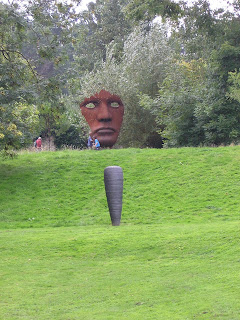Vive le vin!
My mother accused me of being a boozer. I don't think so, but I do enjoy a glass of wine with dinner - it's so civilized. So I cannot resist sharing a few quotes about wine. Music, poetry, and wine - plus a little gooey French cheese - what more could one ask? I am currently reading I'll Drink To That: Beaujolais and the French Peasant Who Made It the World's Most Popular Wine by Rudolph Chelminski. Near the beginning of the book, Chelminski offers a short history of wine and its health-giving qualities. He mentions Dr. Guyot (1807-72) who wrote a massive study on the French wine industry. He recommends that a family of four (mother, father, and two children) drink at least 1500 liters of wine a year - that averages out to almost 1.5 US quarts per day per individual, children included. He goes on to quote a twentieth century maxim: "vegetables make merde , meat makes meat, wine makes blood." And a few quotes from http://www.wrathofgrapes.com/winequot.html : ...





